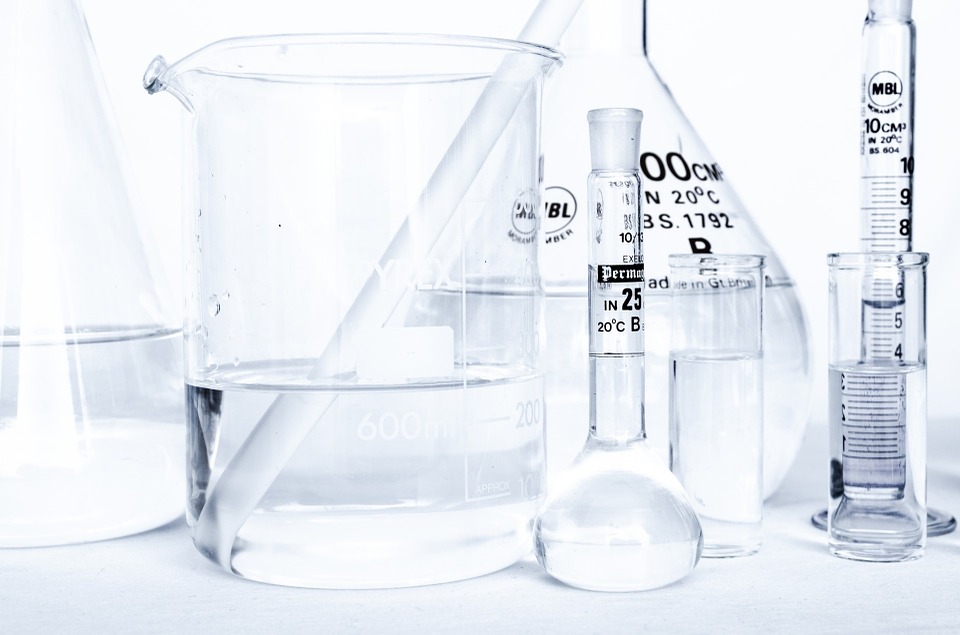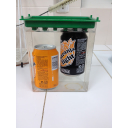Task 4. Your lab report
Image Gallery

- 1. Work in groups of 2-4 people.
- 2. Choose a phenomena to study. The floating can is just a proposal, you can select another if you want.
- 2. Read carefully the instructions given in 'Lab report template'
- 3. Timing: three lab sesions is the class time you can invest in your project. You probably need homework to conclude your report.
- 4. No projects will be accepted after the deadline.
INSTRUCTIONS
LAB REPORT
TITLE: [Write a brief and descriptive title]
DATE: [ __ / __ /__ ]
[Use your own picture]

GROUP MEMBERS:
-
[Name Surnames]
-
[Name Surnames]
-
[Name Surnames]
______________________________________________________________________________________________________________________________________________
LAB REPORT TEMPLATE worksheet: odt pdf
Use this step-by-step guide to write your lab report. Check 'Lab report rubric' to get accuracy on your work.. All the information 'in grey' must be erased and replaced by your compositions.
Title
-Write a brief and descriptive title that crealy incorporates the variable of your experiment.
-
Example: The effect of acids in egg shell hardness .
Problem or Question
-Identify the problem that you want to solve. What question are you trying to answer?.
-
Example: The problem is how to explain that the egg does not break when......./Why doesn't the egg break when...?
Information
-Include here any preliminary observations and background information about the problem.
-
Example: We found that the egg...../ After looling up on the internet, at the label..., we found that the egg ….
Hypothesis
-Write your Hypothesis here (a possible solution for the problem) based on the collected information.
-
Example: Our hypothesis is that the egg does not break because of the shell hardness ...
-Make sure your explanation is testable, and write it as ' If.......then......' statement.
-
Example: If .we change the shell hardness then the egg will break........
Variable: Identify the variables to be tested. REMEMBER: only one variable must be taken into account per experiment.
-
Example: -Variable: shell hardness........
Experiment
-Materials
-Write a list of all items used in the lab.
-Procedure
--Write a detailed list of instructions you followed for doing the experiment in a way that anyone else could repeat the experiment.
Remember: for giving instructions, imperative sentences are required.
-
Example: Step 1. Take a beaker with 200 ml of water
Results (Data)
-Write down the information obtained through the experiment in several paragraphs (complete sentences) with graphs, charts or pictures which should be labeled appropriately.
-Modify the procedure if something does not work properly. Remember to write it.
Conclusion
-Write a summary of the data to help understand your results. Do not copy results here. Summarize and reference the main information in few sentences.
-
Example: Our results showed that…
-Connect the data with your hypothesis.
-
Example: Data collected supports /suggests that…/does not support. There is enough/insufficient evidence to support our hypothesis that... because…
-Discuss the variables controlled in your experiment and others that could be involved (if any).
-
Example: The variable tested was… but ... could have affected the experiment.
-Accept or reject your hypothesis: explain why you accepted or rejected your hypothesis using data from the lab.
-
Example: Regarding the results of the experiment, our hypothesis is accepted/rejected because…
-Name the scientific concept or principle involved in your experiment.
-
Example: The scientific principle examined through this experiment was…
-List one thing you learned and describe how it applies to a real-life situation.
-Discuss possible errors that could have occurred in the collection of the data (experimental errors)
[Share Findings]
Print a copy when finish or send your file to your teacher email address. Please, identify your document by the following format: Lab_Report_GroupNames.odt.
*DEADLINE: The lab report deadline is due to _/__/__. No projects will be accepted after the deadline
![]() This work, “Lab report” is a derivative of “Lab Report Template” by Biologycorner.com, used under a Creative Commons Attribution-NonCommercial 3.0 Unported License. “Lab report” is licensed under a Creative Commons Attribution-NonCommercial 4.0 International License by Marcos Lago Álvarez.
This work, “Lab report” is a derivative of “Lab Report Template” by Biologycorner.com, used under a Creative Commons Attribution-NonCommercial 3.0 Unported License. “Lab report” is licensed under a Creative Commons Attribution-NonCommercial 4.0 International License by Marcos Lago Álvarez.
PROPOSAL: Why is a can floating?
This is an example of a phenomena to study in a science project (If you want another one, please check extension taks for this section).
Watch carefully this picture taken from the model presented in class. You are free to check all the components in the lab. No destruction will be allowed (you cannot open the cans, but check the labels).

LAB REPORT RUBRIC odt pdf
Group members:__________________________
|
Very good (3 points) |
Good (2 points) |
Poor (1 points) |
Not attempted ( 0 point) |
|
|
Title |
Title is relevant and descriptive |
Title is just a general description |
Title is irrelevant or erroneus |
|
|
Problem/ Question |
Includes the question or the problem to be answered by the experiment |
Problem or questión is partially identified |
Wrong question or problem, unconnected with observations |
|
|
Information |
Includes preliminary observations and background information about the problem. |
Some background information and observations, but partially |
Little background information or wrong observations. |
|
|
Hypothesis |
1. The hypothesis is based on collected information and testable. 2. The hypothes is writtten 3. Variable was clearly identified. |
2 of the 3 "very good" conditions met |
1 of the 3 "very good" conditions met |
|
|
Materials |
A detailed list of all items used in the lab is included. |
Materials included, some minor items are missing. |
List very incompleted, basic lab equipment is missing. |
|
|
Procedure |
Description or step-by-step process is included, could be repeated by another scientist |
Description included, some steps are vague or unclear |
Difficult to repeat following the steps. Very unclear or pivotal steps missing. |
|
|
Results |
Results and data are clearly recorded, organized so it is easy for the reader to see trends. All appropriate labels are included |
Results are mainly clear and labeled, minor errors in organization or recording data. |
Results are unclear, missing labels, trends are not obvious, disorganized. Not enough data to justify results. |
|
|
Conclusions |
1. Summarizes data used to draw conclusions 2. Controlled variables are discussed. 3. Possible applications or real world connections are mentioned 5. Scientific concept or principle involved in the experiment is included. |
3 or 4 of the 5 "very good" conditions is met |
1 or 2 of the 5 "very good" conditions met |
|
|
Format and Lab Protocols |
Lab report submitted as directed, and on time. Directions were followed, stations were cleaned. All safety protocols followed. |
Most of the "very good" conditions were met; possible minor errors in format or procedures |
directions were not explicitly followed, lab stations may have been left unclean or group not practicing good safety |
|
|
|
Total (out of 27) |
|||
![]() This work, “Lab report rubric” is a derivative of “Lab Report Rubric” by Biologycorner.com, used under a Creative Commons Attribution-NonCommercial 3.0 Unported License. “Lab report rubric” is licensed under a Creative Commons Attribution-NonCommercial 4.0 International License by Marcos Lago Álvarez.
This work, “Lab report rubric” is a derivative of “Lab Report Rubric” by Biologycorner.com, used under a Creative Commons Attribution-NonCommercial 3.0 Unported License. “Lab report rubric” is licensed under a Creative Commons Attribution-NonCommercial 4.0 International License by Marcos Lago Álvarez.
Licensed under the Creative Commons Attribution Non-commercial Share Alike License 4.0
